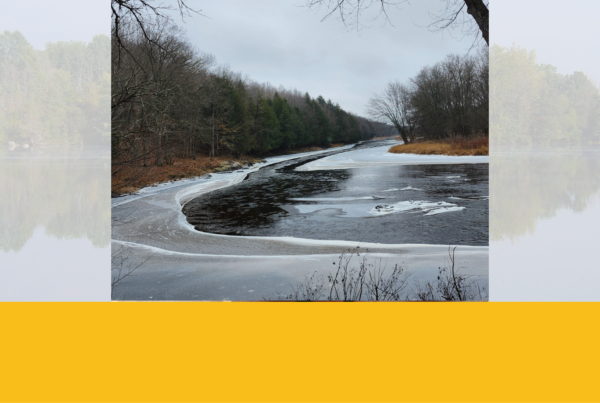Safety at Steigerwaldt: Ice Safety
Welcome to the new year! It’s time to set some new goals and resolutions for the upcoming year. Some of your goals may be to exercise more, travel more, or just enjoy life more. While these are all great goals, everyone should also be adding safety to their goal sheet. To recap some of last year’s safety topics so you can take notes of what you want to take with you into 2024, let’s look over a few that we covered:
– Safe driving – Bears
– Hunting safety – Bees
– Cold weather safety – Ticks and bugs
– Basic first aid – Wind safety
To kick this off 2024, our first topic is going to be ice safety.
When working in the forest, you may come across a frozen waterway such as a pond, river, or wetland. Your first thought might be to just cross it to save on time and energy, but this decision could be risky and put you in danger. Take caution when you come across a frozen waterway and assess the situation to help you make your final decision. There are a few factors that influence ice production such as:
– The Weather: Having consistent nights and days of below freezing temps will help increase ice production making waterways a lot safer than if the weather is mild.
– Water Flow: If there is constant waterflow beneath the ice, whether that is in a stream or ground water, it will lessen ice production as ice crystals will not be able to form as quickly or at all.
– Snow Depth: Believe it or not, the depth of our snow has a huge influence on our ice production, especially in wetlands. As cold as snow may seem, it actually acts as insulation and keeps waterways sheltered from the cold air. If the snow is deep, wetlands in some instances will not even freeze during the winter and can become very sloppy.
There are a few ways to help prevent yourself from falling through ice:
1. Remember that ice is never 100% safe.
2. According to the Minnesota DNR you need at least:
- 4 inches of ice to walk, ice fish, ice skate.
- 5-7 inches to snowmobile.
- 9-10 inches for a small car.
- 11-12 inches for a medium sized vehicle.
- 16-17 inches for a heavy-duty truck.
3. Know your limits: if you do not feel safe crossing a frozen water way, then don’t!
4. Remember weather, water flow, and snow depth have a huge influence on ice.
What do you do if you fall through the ice?
- The biggest rule about falling through the ice is not to panic. You are already going through a lot, and you must save your energy and figure out how to get out of the water.
- Keep your clothing on instead of taking it off. Even though you are now wet, your clothing is still holding air and heat.
- Turn towards the direction you came from as that ice was strong enough to carry you to this point.
- Place your hands and arms on the unbroken ice. If you have something sharp on you, try to pull yourself up onto the ice with it by poking the item into the solid ice (such as an ice pick).
- From there, kick your feet and use your upper body strength to pull yourself forward and back onto the ice sheet.
- Lie flat on the ice once out of the water so you can distribute your weight to prevent breaking through again.
- Once you are out and feel safe again, head back the way you came out and get to a warm place and change out of those wet clothes before you get hypothermia. If you have a working phone or device on you, call for help, especially if you are showing signs of hypothermia.
If you have further questions on how to save yourself if you fall through the ice, visit the Wisconsin or Minnesota DNR webpage where they provide videos of more tips. https://www.dnr.state.mn.us/safety/ice/survival.html
Enjoy the winter as it comes and remember to check the ice to see if it’s safe before you go onto it!
Nate Loeffler, Forester







